-
Posts
5,844 -
Joined
-
Last visited
Content Type
Profiles
Forums
Developer Articles
KSP2 Release Notes
Bug Reports
Posts posted by Drew Kerman
-
-
5 hours ago, Sharpy said:
Kerbal Alarm Clock adds tiny "fast forward" arrows to maneuver nodes in map mode, to warp to maneuver. For me, they are far more of a liability than help, because they are far more likely to be clicked accidentally than intentionally. There was some way of disabling them, but for the life of me I can't find it...
I'm not sure if there was ever a way to disable them, but I do recall a setting that lets you change the behavior to a dbl-click to prevent accidental warping
-
4 hours ago, salajander said:
I read through that tutorial, but I must have missed that part. I'll go through it again. Thanks!
It's not really stated specifically, it's just what you do when you plot the burn out of LKO and towards Mun
-
21 minutes ago, Proot said:
From certain distances, the atmospheric scattering overlaps the terrain scatters. See here: http://imgur.com/NkyLXlZ
can confirm also on current version for KSP v1.1.3 if that helps any
-
5 minutes ago, salajander said:
Ah, ok, good to know. I'd still like a good method to figure out what the best initial inclination is for a given planetary transfer window.
You get that information from the departure burn. Just use the default orbital parameters to start with and you'll get a departure burn with the inclination needed to get you to your destination. From there you use....
Aaaannd I stopped typing cause I got a notification that Arrowstar was here
 Hi there! *waves* haha
Hi there! *waves* haha
Also this is all information you can get from the Solar System Edge tutorial shipped with KSPTOT.
-
4 hours ago, salajander said:
Naturally I'd then want an idea of when to actually launch in order to reach this orbit...
I was troubled by this too at first, but it's not as important as you think. As long as you are in orbit before the departure date, you can rework the departure burn for the actual orbit you are in without any huge impact on your travel plans. The most important thing about your initial orbit is the inclination, as that's the most costly thing to compensate for.
-
would it be possible for the Figure window to maintain the plot box position when you rotate? If you're not sure what I'm talking about just do those steps - open a Popout Orbit Display, click the hand tool and pan the plot around a bit, click the rotate tool and notice when you rotate the plot box is moved back to the center of the window. Reason I'm asking is because you can't zoom in on something and rotate around it, when you pan to center it and rotate the box moves and the thing you centered on is no longer in view
-
-
yay for official release! But thanks again to @KortexM for pushing this along in the interim
-
9 minutes ago, Benji13 said:
Can someone please tell me why I'm getting errors with this patch?
Check your braces - {
A second look I see you mistakenly used a bracket ] instead of a brace {
A third look and you probably didn't mistake the bracket but instead copy/pasted and forgot the brace
Ok I'm done looking
-
-
On 10/27/2016 at 2:16 PM, ManeTI said:
Hi, we are updating the forum software next week, lets wait to see if that helps.
if the update went through, it didn't help

-
Operations Summary – Week of 10/3/16 Progeny Mk1-B Launches Successful
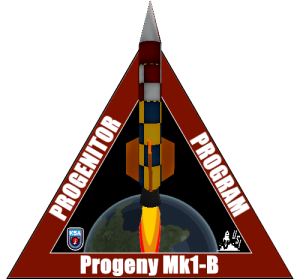 We were very pleased with the launches that were carried out to perfection this past Tuesday. After the first Mk1-A launch campaign Lanalye, Simon and Drew sat down and really hashed out what a proper schedule should be for carrying out a Progeny launch. The timeline allowed everyone to know what they were supposed to be doing and when they were supposed to be doing it so things operated as smoothly as possible. There were not any huge snags in the Mk1-A launches but there was some minor confusion here and there, and that could lead to dangerous circumstances when playing around with high powered rockets!
We were very pleased with the launches that were carried out to perfection this past Tuesday. After the first Mk1-A launch campaign Lanalye, Simon and Drew sat down and really hashed out what a proper schedule should be for carrying out a Progeny launch. The timeline allowed everyone to know what they were supposed to be doing and when they were supposed to be doing it so things operated as smoothly as possible. There were not any huge snags in the Mk1-A launches but there was some minor confusion here and there, and that could lead to dangerous circumstances when playing around with high powered rockets!
Other than a slight weather delay for the first launch (our first but certainly not last launch delay we are sure) both the Mk1-B1 and Mk1-B2 flights went off perfectly with full recovery of both the payloads and the boosters. The second flight was most interesting as the booster actually collided with the payload after separation (you can see the video here) and was sent off on a lateral trajectory that carried it in an arc curving back towards the KSC. It landed southwest of the launch pad well short of the tracking station so no facilities were endangered but it was still a rather bizarre and unexpected event! Well, we suppose that’s experimental rocketry for you.
We also had a distinguished guest visiting us for the second Mk1-B launch. Jylivin Kerman, head of the Assembly’s committee on science and education, was both the first representative from the kerbal central government to visit us and our very first visitor to the KSC. She was allowed access to the launch control building during the launch so she could see the controllers in action. Afterwards she commented on the professionalism she witnessed and the overall thrill of seeing a rocket launch. She’ll be personally debriefed by the Presider upon her return, and we are very pleased she was able to witness our teams in action.
Engineering teams will now be spending the next week or so analyzing the multitudes of data recovered from both onboard telemetry computers, although their initial analysis has already green-lit a third Mk1-B launch next week. This will also be compared to the performance of the Mk1-A flights and the next steps for the Progenitor program will then be determined.
Minmus Transit Wows Astronomers
Our own Commander Valentina traveled with a group of astronomers nearly halfway around Kerbin to witness a rare celestial spectacle as Minmus transited across the face of the sun. The location was chosen so the transit could be monitored from sun up to sun down. Although the entire transit period would take longer than that, they at least got to see the transit begin and make observations as Minmus crossed onto the disk of the sun, using the thicker atmosphere on the horizon as a natural filter to make the transit visible, switching to filters later in the day.
Transits of Minmus are rare because of its 6 degree inclination, which tends to keep it above or below the sun whenever it passes between it and Kerbin. The next transit will occur on 11/30/16 and be visible over KSC for most of its duration. After that, it won’t be until the following year that two more transits occur, on 5/4/17 and 6/29/17.
Research & Development Looks Towards Future Applications
Head of R&D Wernher Von Kerman and his team of researchers have certainly not been idle in the weeks since the KSA began operations. Much of their early focus rested on closing out the KerBalloons project and testing the first prototype. That out of the way, while they await the next order to be fulfilled, they have returned focus to developing additional rocket payload instruments. Chief among these are pressure and temperature sensors, which are in high demand right now by kerbal meteorologists looking to get a better understanding of the atmospheric behavior since re-stabilizing after the asteroid impact. The temperature sensor is nearest to completion and will be tested on an airship excursion next week to sample areas in the region for comparison to readings taken during last month’s unusual heat wave. Lead Scientist Cheranne will be accompanying the 2-day expedition. Wernher says he expects both instruments to be flight-ready by the end of the month, to be flown on Progeny rockets.
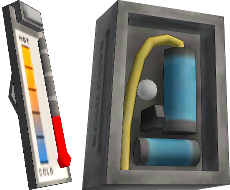 In additional R&D news, further development has been made on the fuel processing that will create the juice to power liquid rockets. Currently we are relying on solid fuel boosters with a set thrust rate and continuous burn. These rocket motors will continue to be used in various forms as our program develops but they must also be eventually superseded by their liquid fuel variants in order for us to truly achieve control over rocket flight. The necessary oxidizer that will combine with the liquid fuel to produce the explosive thrust has already been manufactured. Engineers from Umbra Space Industries are nearing completion of their LFO (Liquid Fuel/Oxidizer) engine as well.
In additional R&D news, further development has been made on the fuel processing that will create the juice to power liquid rockets. Currently we are relying on solid fuel boosters with a set thrust rate and continuous burn. These rocket motors will continue to be used in various forms as our program develops but they must also be eventually superseded by their liquid fuel variants in order for us to truly achieve control over rocket flight. The necessary oxidizer that will combine with the liquid fuel to produce the explosive thrust has already been manufactured. Engineers from Umbra Space Industries are nearing completion of their LFO (Liquid Fuel/Oxidizer) engine as well.
Celestial Snapshot of the Week
As usual many cool shots of the sky were taken this week. The Minmus transit stands in a class of its own, but it still factors into our favorite image from this week, which is a bit of a repeat from last week except taken during the day instead of night. Specialist Bob, who has been a bit of an understudy for Commander Val, took this photo with a bit of guidance from Val.

Minmus and Mun are now 2 degrees apartFrom the Desk of Drew Kerman (Out of Character Behind the Scenes stuff)
SpoilerWritten on 9/8/16
I made sure to go back and mention it in my first dispatch, but writing this today is the day I actually created my @DKerman_KSA account. It’s been something I’ve been thinking about doing for a while. I have a personal twitter account already but I don’t really use it much anymore and I wanted to create something KSP-related so that when I responded personally to things I saw in the KSA timeline people would have a good chance of realizing who it was. I also very much enjoyed the personal approach I took to the @KSA_MissionCtrl account during the hiatus and wanted to continue to have a way of communicating directly to fans. A lot of times in the past I wanted to reply to posts on twitter but doing so as @KSA_MissionCtrl just seemed awkward. I’ve tweeted as much of all this when I first started @DKerman_KSA but in case it’s all been buried by now, that was the reason for it.
Yea that second Mk1-B launch had a cool consequence of the booster bumping the payload after separation. I was afraid the game wouldn’t be able to replicate it for me to go back and video, but it did after several tries and I was able to capture some good footage. However I accidentally also captured the booster flying back and impacting the ground in a wide shot – I didn’t even realize it until I was pretty much done and rendered out. So rather than go through filming it all over again I just went back and changed things I had written previously about where the booster landed – because it didn’t come down in the same spot it did originally. I had to guesstimate it’s landing location and then composite over the damaged booster from the original landing:

Original landing on the left, adjusted landing on the rightI actually spent some time sourcing sound for this video, and it was as much of a pain in the ass as I thought it would be. I pulled the sound from a model rocket launch video on YouTube. The wind noise is from the Chatterer mod. Finding good sounds isn’t easy, so I will not be including them in all my videos. But at least once I would like people to hear how I think the rockets should sound.
Also, the clouds really happened on that day for the first launch. I wanted a weather hold to happen, and was prepared to muck around with the cloud positions to make it happen, but I didn’t have to. That was nice.
Dealing with a couple of issues that are holding things up and that’s always annoying. The good news is that it’s only holding up the creation and scheduling of content, not actually holding up my overall progression. It’s taken me a while to get a good look to the sun while Minmus was transiting and I’m still working on getting a few details right. Not sure how it will ultimately turn out but yes, I am writing this before the Minmus transit details you see posted above. I will have to come back and edit those in later. Such is the nature of having a month lead time to work things out. Another annoyance is CameraTools bouncing the camera up a few feet when a rocket is launched, which ruins the video I’m trying to take. I let it go with the Progeny Mk1-A videos but I want it fixed for the Mk1-B footage and future videos, so hopefully the CameraTools maintainer can release a bug fix. For now I just use KerbCam for the initial launch footage and then switch to the zoomed-in CameraTools view (two separate videos).
Here’s another issue that I didn’t notice and had to fix after the fact. Sometimes terrain textures get stretched and I failed to make note of this when taking the original image on the left so I had to go back to that day/time (yay HyperEdit) and position the camera close to the original location, take a screenshot and the composite in the booster and payload from the original image so the terrain would be proper. Need to keep a better eye on these things!

texture stretching on the left, fixed image on the rightStill, everything is going pretty well so far. KSP in general isn’t giving me a lot of issues with crashes or anything like that and the PC is humming along fine since I got the new secondary graphics card. I’m excited that KSP v1.2 is finally in experimentals, although realistically I probably won’t be able to switch over to it fully for about a month while all the mods play catch up. I will most likely end up running v1.1.3 and v1.2 side by side and use each for various things until I can merge everything over to v1.2 when enough mod support is in place.
Hey has anyone ever wondered how I managed my tweets? Well it’s nothing too complicated:
Yup, just text in a text editor! (No, I was not inspired by George RR Martin) All my tweets are stored in this one text file so I can search and easily read through them for editing purposes and making sure things are staying coherent and consistent. I use TweetDeck to schedule the tweets in advance and to check that the character length is good when using hyperlinks and images. I’ll let you see how I schedule them all next week.
-
3 hours ago, EnzoMeertens said:
Wish I could've done more
Good enough for now, thanks!
-
4 hours ago, blackrack said:
but I think this is going in the right direction.
CAN CONFIRM. CARRY ON
-

So I have a theory as to why this contract failed even though I flew to 2.7km ASL over KSC - I used a 2-stage rocket to do it (I'm using FAR). Could this have triggered a failure? I wasn't aware you had to recover the entire rocket, I thought you just needed to recover the payload with the Avionics Package. May want to clarify this if the entire rocket is expected to be recovered intact and you're not allowed to use staging.
-
12 hours ago, Roaminmatt said:
Any working version of this mod for 1.1.3 a download link would be awesome. Thank you in advance this mod looks great.
https://kerbal.curseforge.com/projects/kerballoons-v0-4-2/files
SpaceDock has this ability too, FYI when dealing with mods hosted there
-
3 hours ago, UAL002 said:
Not intended as a pushy question:
Are there any new planned features or just the existing ones working for 1.2.1 when its ready?
https://github.com/PapaJoesSoup/VesselMover/issues
Not saying these will all make it into the next release, but here's where to find them
-
1 hour ago, linuxgurugamer said:
The Subect of the OP still says 1.1.3, all I meant was that it should be updated to show 1.2
I respectfully disagree, the last release is still listed as a beta and last compiled for 1.2pre-release. Would not consider that an officially supported 1.2 version
-
8 minutes ago, ThatHomelessGuy said:
You know its arrogant, derogatory attitudes like that that gets people punched in the mouth in real life, you'd do well to remember that.
LOL. Yea, I suppose that's how it comes off doesn't it? Ah well. That's communicating on the internet for you. I just got home from hanging out with a bunch of friends I haven't seen in a few months/years and I suppose some of that jovialness that your friends get but strangers on the internet don't came out in that post. So anyways, no offense intended just a mis-guided attempt to help ¯\_(ツ)_/¯
-
3 hours ago, ThatHomelessGuy said:
I do thanks. I'll go check the scansat docs. If there is any. Heheh
DMagic has put a ton of effort into all his mods - this includes KSPedia entries for them as well. Go get edumacated
-
3 hours ago, hvacengi said:
Some day, when I clone myself...
*BOINK!*
-
Dayum. I've been using Airships as background objects because I haven't wanted to do any up-close detail work on them but this all giving me more reason to want to...
-
On 11/1/2016 at 9:43 AM, HoveringKiller said:
I'm pretty sure it was mentioned in a post at the top of page 34 that it still isn't working. Although I'm wondering if anybody else has thought of a quick workaround for now, as it seems that if I pin it open, it won't automatically close when I mouse over another window (contracts, notification). That would be a good way to get around it.
On 11/1/2016 at 5:20 AM, Benji13 said:Is there a way to replace the stock resources button at the top of the toolbar with the ARP one?
Dunno how it works in v1.2.1 if it's still broken but in v1.1.3 although broken if you loaded a craft, went back to Space Center and then back to the craft the stock display and button were properly replaced by ARP
-
PapaJ's been really on top of getting things updated quick in the past, but he's got a few more projects on his plate these days and real life can always limit his time to work on KSP stuff. So we all patiently await what we know is coming soon(TM)
Oh, snap - I just noticed BDArmory is now updated to v1.2. That was prob the biggest thing PapaJ took charge of recently. So I'd say it's a safe bet to expect movement on his other mods now that that's out of the way



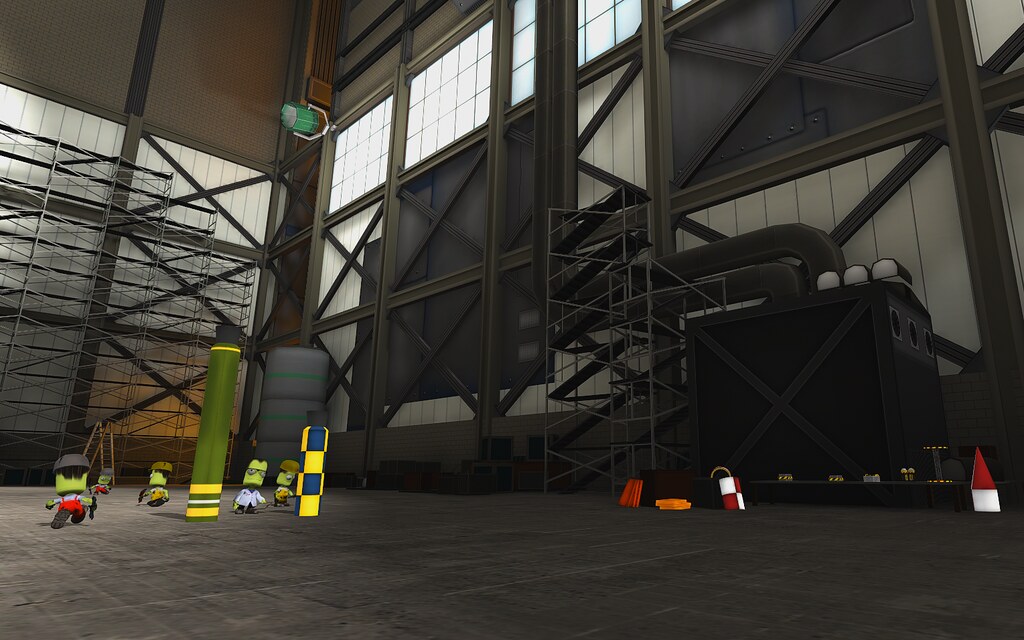
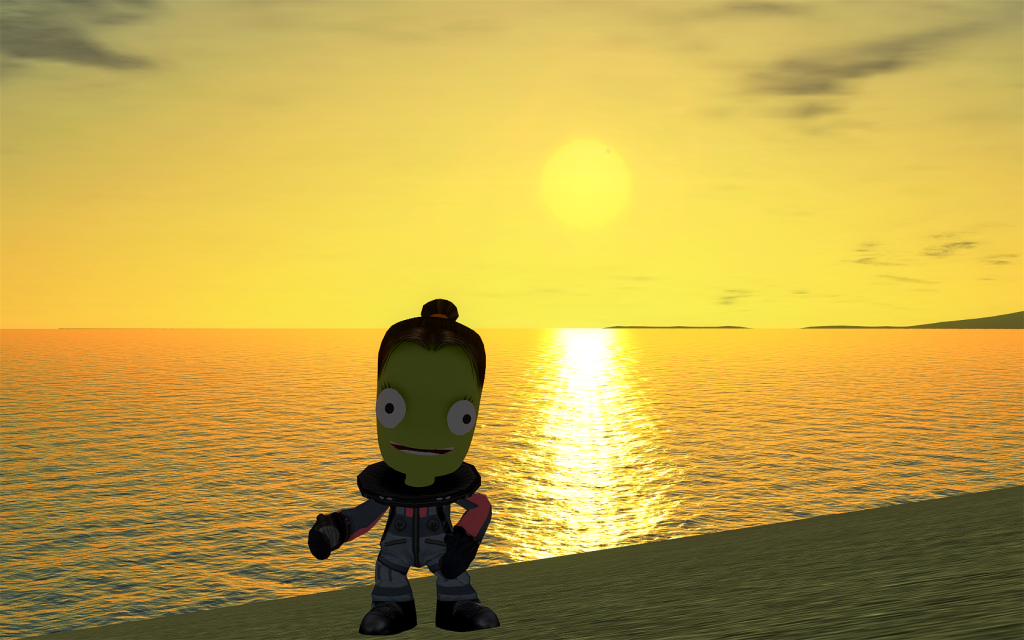
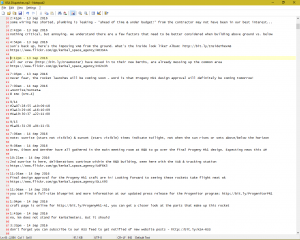
The Kerbal Space Agency: To Be Continued...?
in KSP1 Mission Reports
Posted · Edited by Drew Kerman
Progeny Mk1-B Flight Analysis
The collision on the second flight was thought to have directed the booster on a trajectory that brought it curving back towards the KSC, where it impacted just southwest of the launchpad. However the third launch produced a similar behavior without an impact, and the booster flyback took it all the way to the tracking station, where it narrowly missed impacting one of our communication dishes. Engineers don’t have enough data to form a clear picture as to what led the booster to behave in this manner without an impact when it fell down almost straight after detaching cleanly for the first flight. They suspect it had to do with the extra spin given to the booster by increased fin angle for the third launch.
Spin stabilizing the rocket was a goal of these launches and engineers were disappointed with the performance of the first flight, which had 1.5 degrees of pitch on its fins and barely achieved any roll before burnout. However they were happy to have a direct comparison to the 1.5 degree pitch of the Mk1-A booster. The third launch pitched the fins to 5 degrees and produced a roll rate of 14 deg/s, which was very near the 15 deg/s minimum rate engineers were going for. Coupled with the Mk1-A lower stage they estimate a 2.5 deg pitch will work best for the Mk1-B when used as a second stage.
Flight profiles for all three launches show that once again the non-spinning rocket performed the best, which has led Simon to get his engineers working on a spin table in the VAB so that payloads can be checked for proper balance before being mounted on the booster. Although spinning rockets in general achieve a lower apokee due to energy being used to spin the rocket taking away from velocity (note the faster-spinning flight 3 went slightly lower than flight 1), the lack of payload balance also caused the payload to tumble a lot on all 3 axis after booster separation, which greatly increased drag.
Next Monday Drew, Simon and Wernher will gather to decide on the next steps the Progenitor Program will take.
Is the Monolith Trying to Talk to Us?
Tracking station staff spent the past week analyzing all the data collected from signal analysis during the various rocket launches, where they detected some interference on the frequencies being used to beam down telemetry. They determined the source to be local and ruled out all broadcast sources on the KSC campus, leaving the mysterious Monolith to our north. You can read more in the full press release from earlier this week. No sense has been made so far of the signals picked up from the Monolith, and it does not seem to broadcast unless rocket activity is going on. The tracking station will continue to monitor it closely and see if it picks up anything during our next KerBalloon launch next week.
Temperature Sensor Passes Field Test
Our new 2HOT Thermometer was field-tested this past week on a research trip that went out to collect further data in the region to help scientists put last month’s short heat wave into better perspective. The instrument is the third of four to be tested for future Progeny launches and also use in future KerBalloon flights. There was a minor snafu in the data collected during the trip, which was supposed to be at a much higher altitude, but Kerbin Motion, the meteorology company that contracted us for this research trip, was willing to re-negotiate the terms of our agreement to accept the data. We lost a bit of reputation, but a valuable lesson was learned.
New KerBalloon Launches Next Week
We’ll be receiving 5 new KerBalloon units similar to the one we first tested last month. These will be deployed in various locations in the region surrounding KSC and will carry aloft all four of our Progeny payload instruments: the Aeronomy Sensor Array, Meteorological Survey Package, 2HOT Thermometer and PresMat Barometer. The PresMat will be field tested for the first time on these flights to the upper reaches of the lower atmosphere. Both the thermometer and barometer were developed in partnership with Probodobodyne Inc. The exact timing, schedule and locations for launches are as follows:
Celestial Snapshot of the Week
Easily one of the most impressive planetary captures so far, Commander Val managed to squeeze all seven of the brightest naked-eye planets into a single image frame. Just a day earlier Moho wasn’t high enough to fit in the frame with Sarnus, but thankfully the fast-moving little planet zipped high enough to get into the shot. The only other naked-eye planet not visible in this photo is Dres, which is a hard target to pick out with the naked eye unless it happens to be close to the sun at dawn or dusk when the brightest stars are washed out.
The dawn march of planets
From the Desk of Drew Kerman (Out of Character Behind the Scenes stuff)
Written on 9/14/16
wrapping up this week of operations as the KSA finally rolls into positive UT and begins operations on Sept 13th. It was a great first day for the Agency, lots of interaction on twitter to what was posted. Wonder what people will be thinking by the time they get to this point in the timeline, a month later. Let me know in the comments!
I think the hot days are finally past, for the most part anyways. Where I live doesn’t cost me nearly anything in rent or utilities and I have everything I need but there is the downside of no A/C, which means once the mercury gets above 90F things start to get uncomfortable, especially when the PC is running KSP and has everything spooled up, generating a ton of extra heat. It was really frustrating to go a day without work because of the heat, but such are the trade-offs you make in life.
I guess the most bizarre thing to happen this past week of operations was the booster flyback for the Mk1-B 2nd and 3rd flights. I mentioned last week how I had to tweak some things when the booster landed closer to the pad than it did originally. Well good thing because the third launch followed the same flyback ground track and went even further to almost impact the tracking station. It really did come close to taking out a dish. Not sure if those can be damaged individually. Glad I didn’t have to find out.
Here’s a better look at the editing I do for kerbolar eclipses that I talked about in an earlier desk notes where I said I changed the color of the mountains in the distance:
So what you’re seeing is the original eclipse screenshot captured from the game. Then I waited until just after the sun disappeared behind the mountains and took another screenshot. The mountains in the distance were then composited in Paint.NET and I made some hue/brightness adjustments to them in order to have them look more natural in my opinion. I also use Ambient Light Adjustment to make the scene darker/brighter within the game to adjust for varying light levels (if there are more clouds in the image, I will make the scene darker). I should note though that the vast majority if my images have no post-editing done whatsoever. The game really can look pretty awesome when you set it up right.
Damn these weekly recaps are getting long aren’t they?